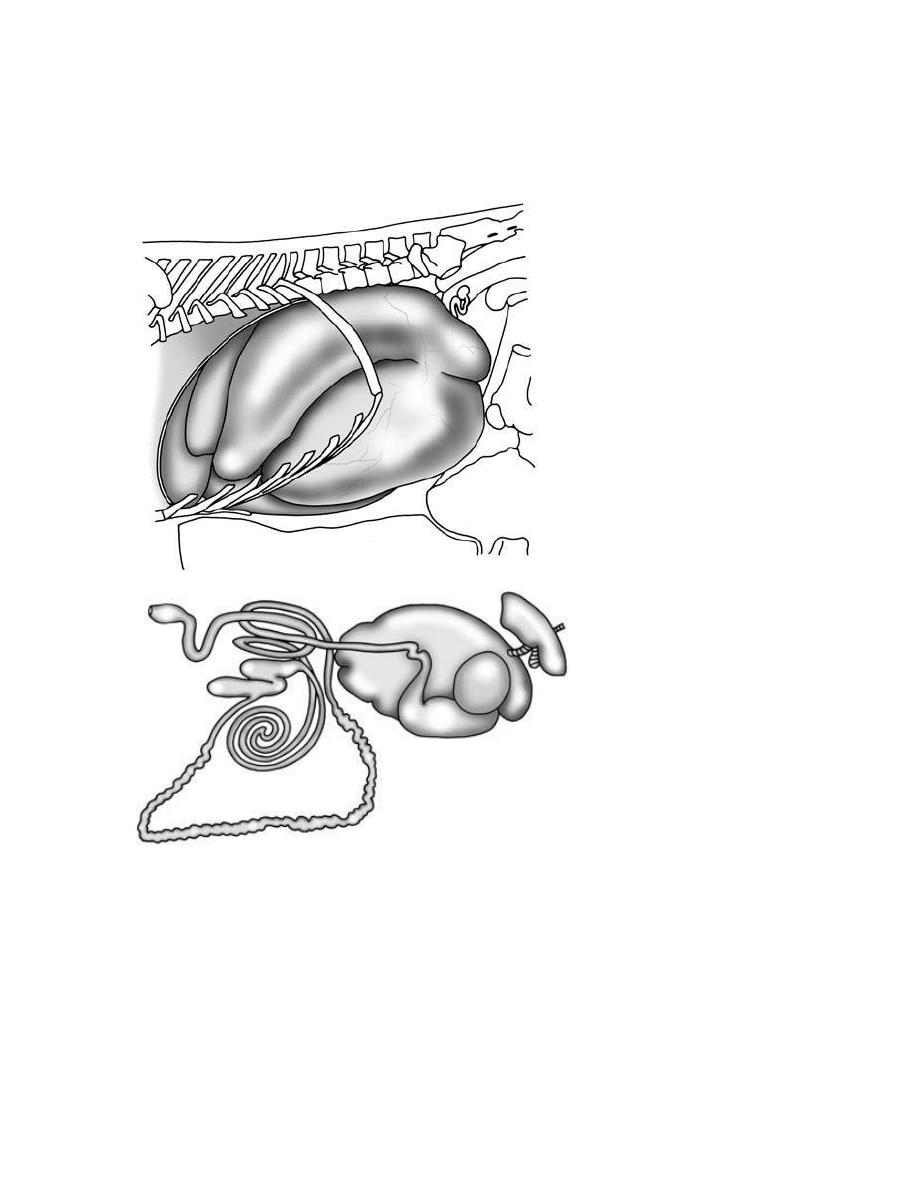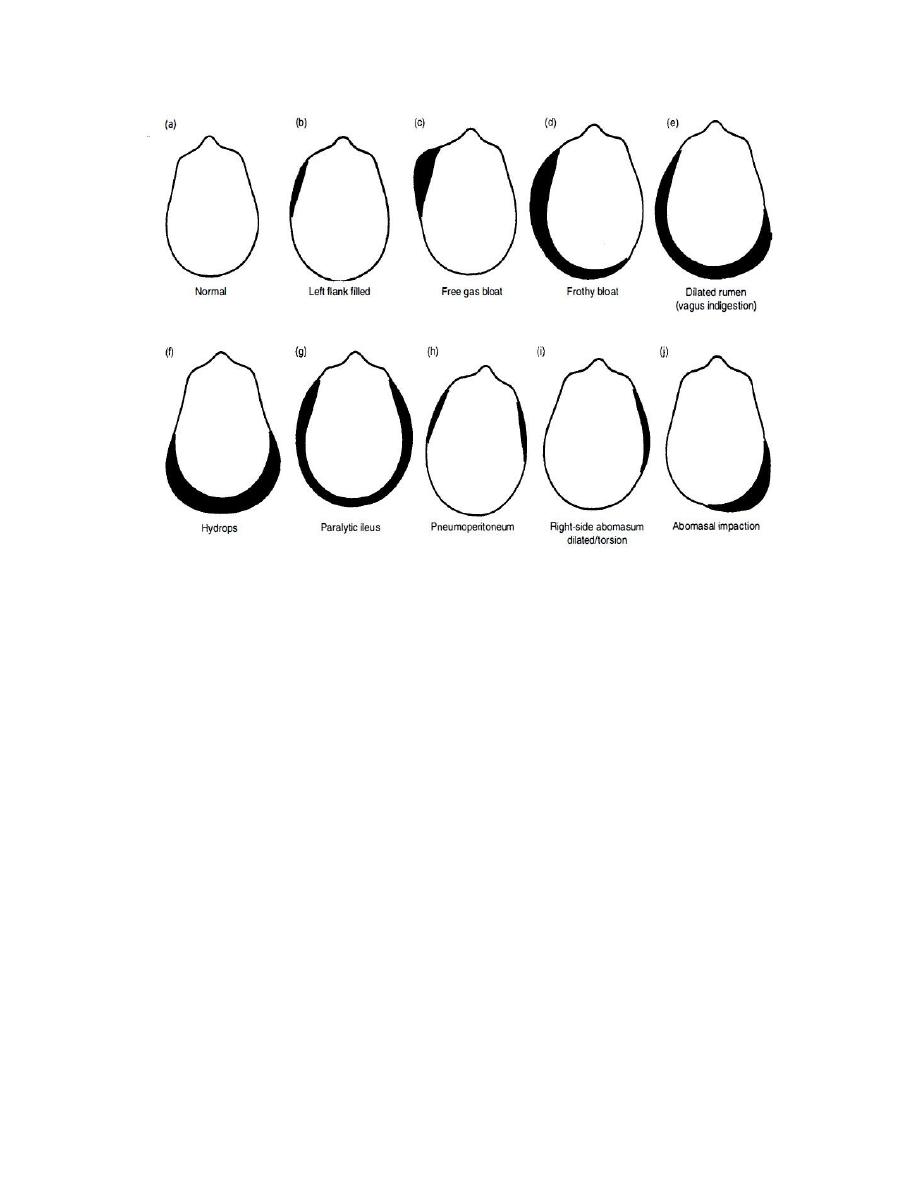
Medicine Lecture 4th Year 17-10-2016 Dr.Osamah Muwafk
1
Diseases of the Rumen, Reticulum and Omasum

Medicine Lecture 4th Year 17-10-2016 Dr.Osamah Muwafk
2
SIMPLE INDIGESTION
ETIOLOGY:
1- variability in quality and the large amounts of feed consumed
in dairy cattle and stall-fed beef cattle
2- indigestible roughage, particularly when the protein intake is
low, moldy, overheated and frosted feeds, and moderate
excesses of grain and concentrate intake in pastured beef
cattle or sheep.

Medicine Lecture 4th Year 17-10-2016 Dr.Osamah Muwafk
3
PATHOGENESIS
1- dietary abnormality
2- Changes in the pH of its contents markedly affect the motility
of the rumen and in cases caused by overeating on grain an
increase in acidity is probably of importance.
3- High protein diets, including the feeding of excessively large
quantities of legumes or urea, also depress motility because
of the sharp increase in alkalinity that results.
4- Atony that occurs after feeding on damaged feeds may have
the same basis or be due to other unidentified agents in the
food.
5- The simple accumulation of indigestible food may physically
impede ruminal activity.
6- Putrefaction of protein may also play a part in the production
of atony.
7- The toxic amides and amines produced may include
histamine, which is known to cause ruminal atony when
given in travenously and to be reversed by the administration
of antihistamine drugs.
8- Histamine may contribute to the ruminal atony that occurs in
allergy, or after heavy grain feeding, but the absorption of
histamine from the forestomachs in any circumstances is
probably very limited.
CLINICAL FINDINGS:
1- A reduction in appetite is the first clinical finding,
2- followed closely in milking cows by a slight drop in milk
production. Both occur suddenly;
3- the anorexia may be partial or complete but the fall in milk
yield is relatively slight.

Medicine Lecture 4th Year 17-10-2016 Dr.Osamah Muwafk
4
4- The animal's posture is unaffected but there is mild
depression and dullness.
5- Rumination ceases and the ruminal movements are depressed
in frequency and amplitude and sometimes are almost absent
6- The rumen may be larger than normal if the cause is sudden
access to an unlimited supply of palatable feed.
7- There may be moderate tympany, especially with frozen or
damaged feeds or in allergy, but the usual finding is a firm,
doughy rumen without obvious distension.
8- The feces are usually reduced in quantity and are drier than
normal on the first day.
9- However, 24-48 hours later the animal is commonly
diarrheic; the feces are softer than normal, voluminous and
commonly malodorous.
10-
There is no systemic reaction and the heart rate,
temperature and respirations are usually within normal ranges
11-
Most cases recover spontaneously or with simple
treatments in about 48 hours.
CLINICAL PATHOLOGY
1- Two simple laboratory tests have been introduced to assess
the activity of the ruminal microflora
a- The sediment activity test
b- The cellulose digestion test
2- The rumen juice can be examined for pH using wide-range
indicator paper.
3- Values between 6.5 and 7.0 are considered normal. In cattle
on grain diets, the pH may range from 5.5-6.0 normally but
in cattle that have been on roughage diets.
DIFFERENTIAL DIAGNOSIS:

Medicine Lecture 4th Year 17-10-2016 Dr.Osamah Muwafk
5
1- Acetonemia
2- Traumatic reticuloperitonitis
3- Carbohydrate engorgement
4- Left-side displacement of the abomasum (LDA)
5- Right-side dilatation of abomasum
6- Abomasal volvulus
7- Vagal indigestion
8- Phytobezoars
9- Secondary ruminal atony
TREATMENT
1- Spontaneous recovery
2- Small quantities of fresh, good-quality, palatable hay should be
provided several times daily to encourage eating and to
stimulate reticulorumen motility
3- Rumenatorics : These preparations contained nux vomica,
ginger and tartar emetic in powder form to be added to water
and pumped into the rumen
4- Alkalinizing and acidifying agents: magnesium hydroxide, at
the rate of 400 g per adult cow (450 kg BW), is recommended
when the rumen contents are excessively acid.
5- Reconstitution of ruminal microflora: An abattoir is the best
source of rumen contents (especially rumen fluid)
6- rumen lavage
